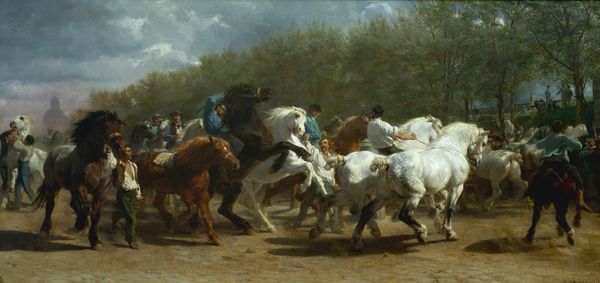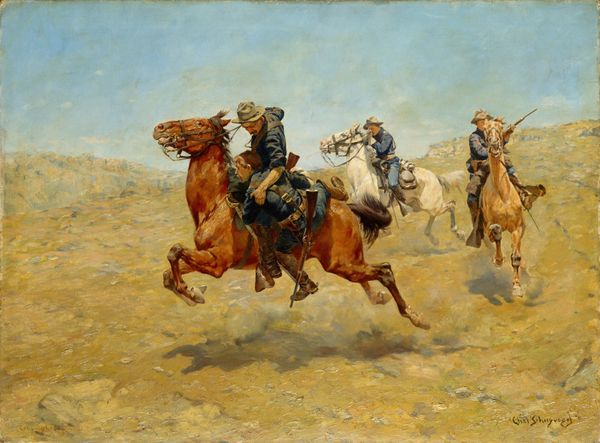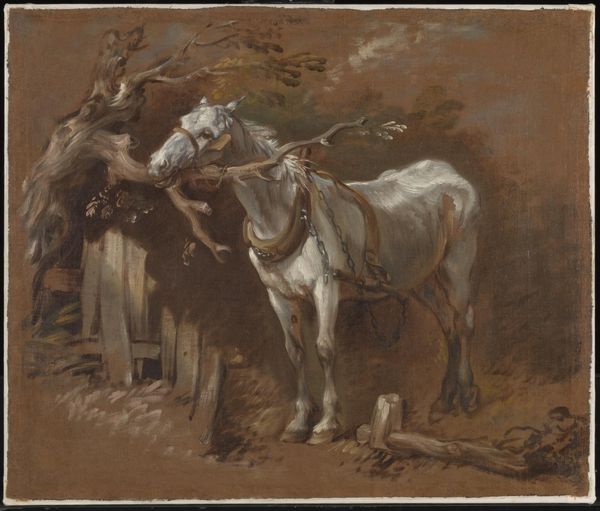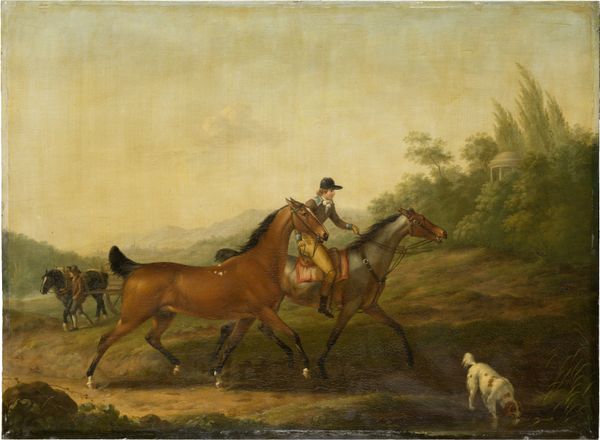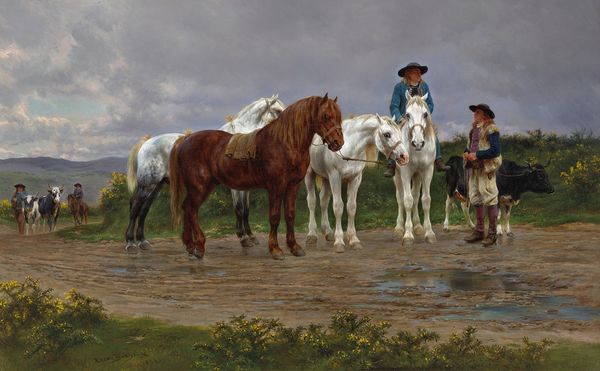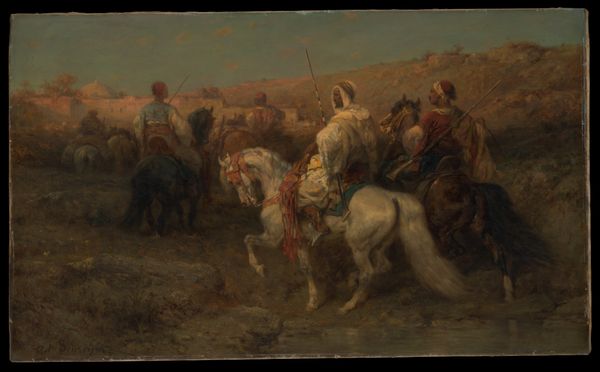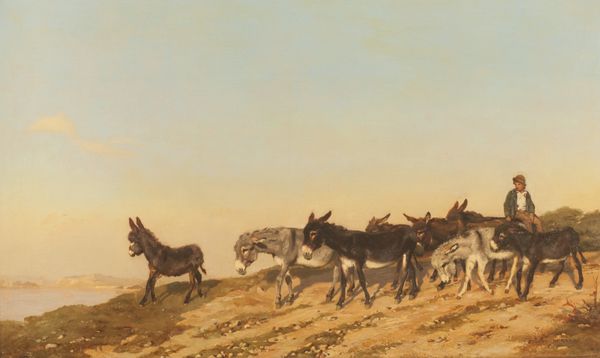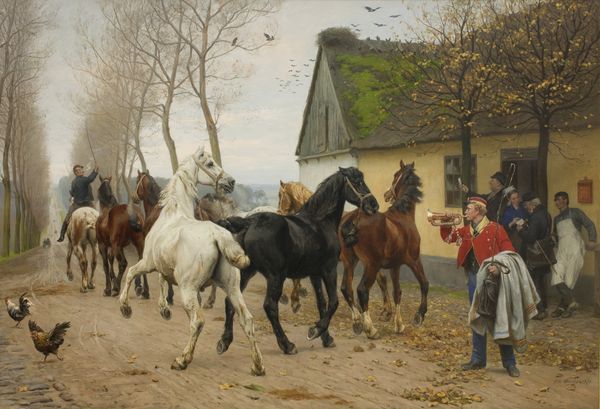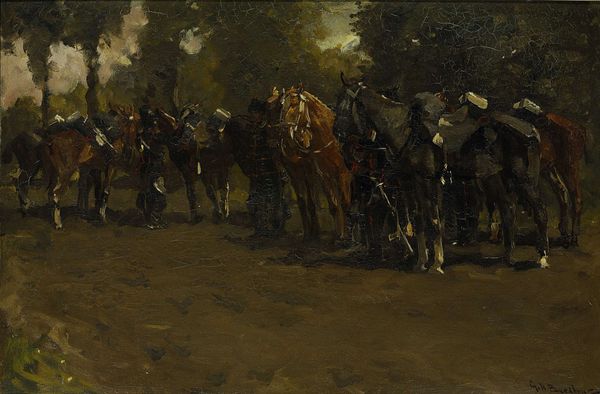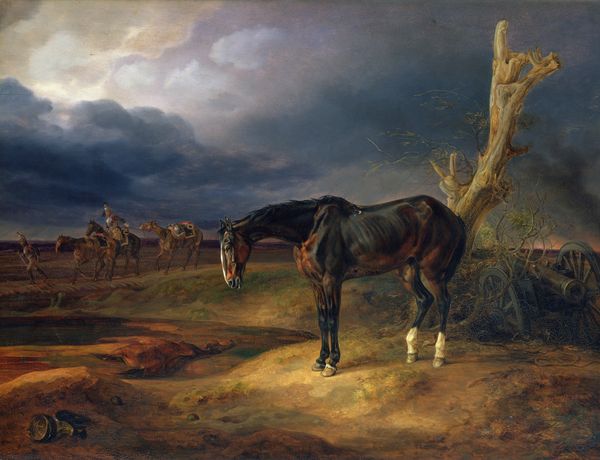
Dimensions: 244.5 x 506.7 cm
Copyright: Public domain
Curator: Immediately, the flurry of motion captures my attention – that frenetic energy feels so visceral. Editor: Yes, there is a palpable sense of life to it. This is "The Horse Fair (reduced Version)," a smaller oil on canvas created around 1855 by Rosa Bonheur. It resides here, in the National Gallery. The original painting, significantly larger, is housed at the Metropolitan Museum of Art in New York City. Curator: Knowing about the existence of a larger work, does this one carry the same symbolic weight? What aspects do you observe when examining these equine figures? Editor: I am thinking a lot about gender and labour in relation to this imagery. Horses are loaded symbols. The horse here transcends simple animal representation. Consider the time period, mid-19th century. The Industrial Revolution was reshaping labour. And this is not work that depends on mechanization, but on muscles, physical skill, animal power. Curator: Absolutely. Beyond mere depiction, there's a dance occurring—a negotiation of power between human and animal. Editor: And the negotiation of identity. As a woman, Bonheur entered what was essentially an exclusive "men's club." And she focused intently on these emblems of power. There's the masculine energy of the animals, of the commerce—and Bonheur positions herself directly within that dynamic. To do this work required special permits. There’s real commitment and determination involved. Curator: Permits granted because of her artistic mission…yet laden with commentary about acceptable societal boundaries, of course! The dust kicked up, the straining muscles, it recalls so many equestrian works by male artists...but with an important distinction in perspective, would you agree? Editor: Yes, she’s actively critiquing existing gender dynamics. These kinds of representations helped solidify her place and stake her claim. Curator: It offers a fascinating glimpse into her life and the era's sensibilities concerning work, animals, and womanhood. Editor: I agree. A work where the artist made a place for herself both inside and outside the constraints of her society.
Comments
No comments
Be the first to comment and join the conversation on the ultimate creative platform.
